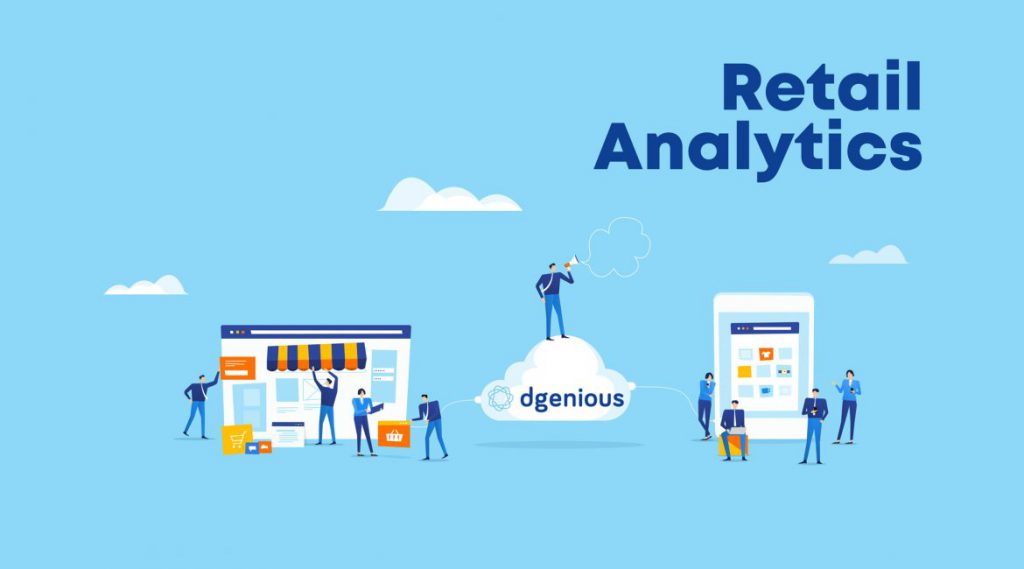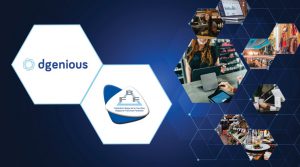
Data analytics has the power of transforming every aspect of a retail business, providing valuable insights for every department from logistics to management, marketing, and sales.
You’ve probably heard several professionals praising the significance of retail analytics and the beneficial impact it had on their business.
But what exactly is retail analytics, and can it also boost your business?
This article contains essential information on retail analytics and its importance, plus a series of best practices that can help you yield better results.
What is retail analytics?
Retail analytics is the process through which retailers discover, gather, and make sense of the data generated throughout their departments.
What emerges from these processes is a set of actionable insights based on business trends, emerging patterns, and performance indicators. Using these insights, you can improve vital aspects of your retail business, such as customer experience, logistics, management, and even sales.
Why use retail analytics?
Data analytics drives competitiveness levels by helping businesses stay ahead of the curve. But data alone won’t get very far.
To make sense of the numbers, you need to match different sets of data and intersect them in ways that reveal new perspectives. That being said, retail analytics can make a world of difference for your business.
Through retail analytics, you can:
Understand your customers’ behaviour and adapt your strategies, offers, and logistics to better meet their demands.
Create relevant customer experiences and boost your sales through activities that ring true to your target (and even build loyalty).
Stay on top of demand and inventory by predicting trends, patterns, and seasonal customer demand — subtle changes you would otherwise overlook.
Optimise in-store operations by identifying what works and what doesn’t, and ensure you’re balancing staffing with demand. GET YOUR FREE DEMO
Types of retail analytics.
In-store analytics

In-store analytics include metrics such as foot traffic, dwell time, and conversion rate, among countless others. In-store data gathers the most important numbers that reveal the story of what’s happening across your retail stores, from workforce productivity to customer behaviour.
Not surprisingly, these insights can prove invaluable to your business, as they can hint at trends worth following or uncover areas that need improving. Moreover, they can help you make more profitable staffing decisions or optimise your store layout according to traffic patterns.
To capture in-store data, you need to consider advanced in-store technologies such as location trackers, video cameras, and heatmaps. Practically, you need to be able to count the number of people who enter your stores, study their routes and pinpoint the spots where they linger the longest. Plus, you also need to understand how your workforce drives conversion rates (or fails to do so).
Customer analytics

Customer analytics help you understand the behaviour of your clients across your retail channels. This intelligence can then help you create more engaging experiences and reinforce current relationships by rewarding loyalty.
However, to access the power of customer analytics, you must first collect data on each sale made through your POS. Luckily, with modern POS systems, this is fairly easy. Every POS transaction can tell you something about who your customers are, how much they like to spend, in which locations, and during which seasons.
These data points, combined with demographics gathered from social media platforms and digital channels, can lead to improved retail strategies that translate into more sales.
To leverage customer data even more efficiently, encourage your clients to actively share additional data about themselves. By involving them in your data-gathering process, you’ll make them feel valued and listened to. Consider surveys, focus groups, or feedback forms as a means of collecting more quantitative and qualitative data.
Merchandise attribute analytics

Merchandise attributes analytics give more insights into what types of products customers prefer. To use such analytics, you first need to attribute a series of descriptions to your merchandise. These descriptions can vary from colour to fabric/material, size, silhouette, and so on.
Since looking at too many descriptions can become overwhelming, the trick is deciding on what attributes can help you build better offers or make changes in your stock. Correlating different relevant attributes can help you understand what drives purchasing decisions. Equipped with this knowledge, you can adjust your logistics, marketing, and sales strategies accordingly.
Inventory analytics

Inventory analytics are key to a balanced inventory. In fact, inventory analytics are almost synonymous with inventory optimisation. Their role is to ensure there’s no product surplus that can cause slow turnovers and no out-of-stocks that can lead to dissatisfied customers and loss of sales.
Through predictive analytics, retail businesses can tune into market demands and adjust inventories to express customer needs accurately. As a result, retailers can reduce unnecessary stocks and operate seamlessly. Of course, they are also empowered to prevent stock-outs from occurring, especially for star products.
Not to mention that inventory analytics are useful at more than just handling stocks based on demand. You can also use them to shift demand through a technique called suggestive selling. Inventory analytics can help you identify opportunities to encourage customers to buy complementary products based on previous purchases.
Web analytics

Customers leave digital footprints on every website they visit. That’s why, any business that wants more revenue should follow these steps. The best way to do that? Through web analytics.
Similar to how in-store and customer analytics help retailers understand the behaviour of clients on-location, web analytics enable them to peek into what drives users’ motivation online.
By collecting data on how many visits your webpage has and correlating it with how long each visit is, on which pages users spend the most time, and from which page they exist, you learn how to optimize your site for better conversions. In addition, web analytics are also a great way to measure the success of your retail campaigns, and adjust your offers to closely follow your customers’ journey.GET YOUR DGENIOUS FREE DEMO
How to get the most of retail analytics?
Analyse different data sets together
While each type of retail analytics will offer you valuable insights on its own, looking at the relationships among each other can reveal deeper perspectives. After all, integration is a keyword in the proper functioning of any business. Thus, seeing how all the pieces fall together — and influence each other — is mandatory.
For example, you can correlate in-store analytics with merchandise attribute analytics to understand how to optimise your shop layout to enhance conversions. Subsequently, you can add inventory analytics to the mix, to make sure your layout strategy is backed up by stocks.
Go for multichannel analytics
Every purchase is the result of a long customer journey that takes clients through several channels and different mediums. The journey usually starts online and wraps up in a physical location, but there are countless variations to this rule.
To account for all scenarios, any retail business who wants to see the bigger picture should gather and analyse multichannel information. It’s the only approach that will tell you exactly why people are converting into customers. Not only that, but it helps you track just how much your online marketing initiatives weight in on your revenue.
By combining data from multiple sources, retailers can create the best offers, incentives, and experiences. Plus, they can customize each step of their customer journey and adapt it to different customer profiles.
Don’t forget to factor in human insight
Automated reporting solutions are priceless to retail businesses, but that doesn’t mean human insight is outdated. On the contrary, it can enhance your analytics.
Your team’s feedback and experience can prove instrumental to optimisation efforts. So don’t shy away from consulting with your staff, especially when it comes to issues you can’t track with analytics. You might be pleasantly surprised with the results.
Want to make retail analytics work for you?
Driving more revenue from your retail business stems from making better decisions. If you want to confidently stir your strategy in the right direction, follow the trail of your data.
dgenious can help you correlate and integrate different streams of data into a coherent retail overview that’s accurate and actionable.
Reach out to discover more about how you can regain control of every department in your retail business. Together we can make data work for you.ASK FOR YOUR ONE TO ONE
Bonus: Listen to our Episode #1 dedicated to the following question:



